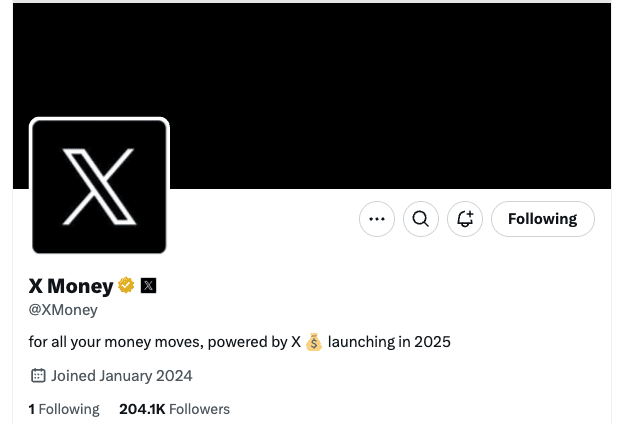Elon Musk has confirmed that beta testing has commenced for X Money, the payment and banking app envisioned as a core component of his ‘everything app’ strategy for X (formerly Twitter). The announcement, made via an X post on May 25th, signals a tangible step forward for the project, initially proposed after Musk’s acquisition of Twitter in 2022.
The confirmation followed a report by Tesla Owners Silicon Valley, an X fan account, stating that Musk had revealed X is “launching X Money soon.” Musk responded to the thread, clarifying that the initial beta program will be “very limited access at first,” emphasizing the critical importance of security and reliability when dealing with users’ savings.

X Money’s 2025 Target Launch
The beta testing phase aligns with the platform’s stated goal of launching in 2025, as indicated by the official X Money account on X. Rumors of an impending launch had circulated previously, fueled by alleged software code leaks in January, suggesting the imminent arrival of payment features within the X platform.

X has been proactively securing the necessary regulatory approvals, obtaining multiple money transmitter licenses across the United States. As of the latest update, X holds 41 such licenses, according to the Nationwide Multi-State Licensing System, demonstrating a commitment to legal compliance and operational readiness.
The Genesis of X Money: From Twitter Acquisition to ‘Everything App’
The concept of integrating payments into X can be traced back to Musk’s October 2022 acquisition of Twitter, which he characterized as “an accelerant to creating X, the everything app.” The vision extends beyond social networking, encompassing a broader range of services, including financial transactions.
The rebranding of Twitter to X in 2023 further solidified this ambition. CEO Linda Yaccarino outlined plans for “unlimited interactivity,” support for diverse media formats, and the incorporation of payments and banking functionalities. Early speculation suggested potential support for cryptocurrencies like Bitcoin (BTC), although concrete details remain undisclosed.
Initial projections pointed towards a mid-2024 launch for the payment platform. However, the timeline appears to have shifted, with the current focus on beta testing and a potential launch in 2025.
What to expect from X Money?
While official details remain scarce, here’s what we can infer about X Money based on available information and industry trends:
- Integrated Payments: Likely offering peer-to-peer transfers, online purchases, and other payment functionalities directly within the X app.
- Banking Features: Potentially including features similar to digital wallets, such as holding balances, tracking transactions, and linking to bank accounts.
- Potential Cryptocurrency Integration: While not confirmed, the possibility of supporting cryptocurrencies remains, aligning with Musk’s interest in digital assets.
- Enhanced User Experience: Aiming to streamline financial transactions within the X ecosystem, making it more convenient for users to manage their money.
Challenges and Opportunities
The launch of X Money is not without its challenges. Regulatory compliance, security concerns, and competition from established players in the fintech space are significant hurdles. Gaining user trust is paramount, especially given the sensitivity surrounding financial data.
However, the potential rewards are substantial. A successful integration of payments and banking could significantly increase user engagement, unlock new revenue streams for X, and solidify its position as a leading ‘everything app’. Musk’s vision hinges on creating a seamless and integrated experience for users, and X Money is a critical component of that strategy.
The Future of X
The launch of X Money is just one part of Elon Musk’s grand vision for the platform. X wants to evolve into an all-encompassing ‘everything app’ that combines social media, communication, content creation, and financial services into a single, integrated platform.
The success of X Money will depend on several factors, including its functionality, security, user experience, and regulatory compliance. However, there is a large amount of confidence within X that it will deliver the goods to the people.